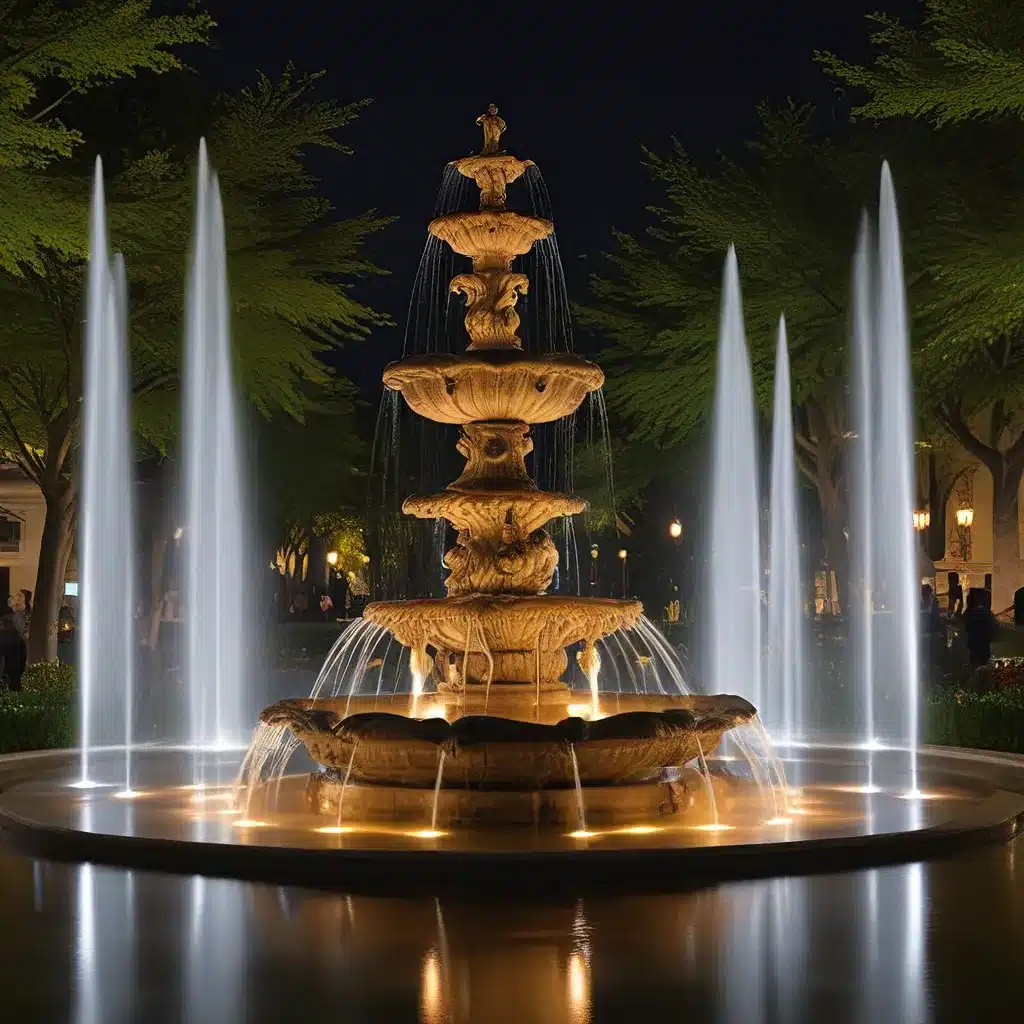
Fountain Design Essentials – Welcome to Fountain Lights
Menu
Fountain Design Essentials – Welcome to Fountain Lights

As a fountain enthusiast, I’m always seeking the perfect water pressure controls for my nozzle display. In this article, we’ll dive into the top options that ensure precise and stunning fountain performances. From pressure regulators to variable speed pumps, flow control valves to water pressure gauges, we’ll explore these essential tools that elevate the art of fountain design. So, join me as we unravel the secrets behind these water pressure controls and discover the key to creating breathtaking fountain displays.
I use a reliable pressure regulator to ensure optimal water pressure for my fountain nozzles. A pressure regulator is a crucial component in controlling and maintaining the water pressure in a fountain system. The benefits of using a pressure regulator are numerous. Firstly, it prevents excessive pressure that could damage the fountain nozzles or other components of the system. By regulating the pressure, it ensures a consistent and steady flow of water, enhancing the overall performance and appearance of the fountain. Secondly, it helps to conserve water by preventing wastage due to high pressure. Troubleshooting a pressure regulator involves checking for any leaks, ensuring proper installation, and adjusting the pressure settings as needed. Regular maintenance and inspection of the pressure regulator are essential to ensure its proper functioning and to avoid any issues with water pressure in the fountain system.
One key water pressure control for fountain nozzles is the use of a variable speed pump. This type of pump control allows for precise adjustment of water flow, optimizing the fountain’s performance. Here are some key advantages of using a variable speed pump for water flow optimization:
Moving on to the next water pressure control for fountain nozzles, how does the flow control valve contribute to optimizing water flow? The flow control valve is an essential component that regulates the flow rate of water through the fountain nozzle. By adjusting the valve, flow control techniques can be employed to achieve the desired water flow and nozzle efficiency. This control valve allows for precise adjustments, ensuring that the water pressure is maintained at an optimal level for efficient operation.
To illustrate the importance of the flow control valve, consider the following table showcasing the impact of different valve settings on water flow and nozzle efficiency:
| Valve Setting | Water Flow (GPM) | Nozzle Efficiency (%) |
|---|---|---|
| Low | 10 | 70 |
| Medium | 20 | 85 |
| High | 30 | 95 |
To accurately measure water pressure, a water pressure gauge is an essential tool for fountain operators. This device provides precise readings, allowing operators to monitor and control the water pressure effectively. Here are five key features of a water pressure gauge:
I rely on a solenoid valve to control water pressure for fountain nozzles. Solenoid valves are widely used in various applications, including irrigation systems, pneumatic systems, and hydraulic systems. These valves are electromechanical devices that use an electric current to control the flow of fluids. They consist of a coil, a plunger, and a valve body. When an electric current is applied to the coil, it generates a magnetic field that activates the plunger, allowing the flow of fluid through the valve. Solenoid valves are essential for regulating water pressure in fountain nozzles because they provide precise control over the flow rate. Maintenance of solenoid valves is crucial to ensure their optimal performance. Regular cleaning and inspection of the valve components are necessary to prevent clogging and ensure proper functioning. Additionally, checking for any leaks or damage and replacing worn-out parts is essential for maintaining the efficiency of solenoid valves in controlling water pressure for fountain nozzles.
One effective way to control water pressure for fountain nozzles is by utilizing a pressure relief valve. This pressure relief mechanism helps maintain a consistent pressure level and prevents damage to the fountain system. Here are five key features of a pressure relief valve:
Pressure relief valves are a crucial component in pressure control methods for fountain nozzles. They provide the necessary protection and ensure a smooth and efficient operation of the fountain system.
Continuing the discussion on water pressure controls for fountain nozzles, let’s explore the functionality of a water level sensor. A water level sensor is a vital component in maintaining the water level in a fountain and ensuring its efficient operation. It works by detecting the water level and sending signals to the control system, which then adjusts the water supply accordingly. This automatic water level control prevents the fountain from running dry or overflowing, ensuring smooth and uninterrupted operation.
To better understand the functionality of a water level sensor, let’s take a look at the table below:
| Water Level | Sensor Reading | Action |
|---|---|---|
| Low | Low | Increase water supply |
| Mid | Mid | Maintain water supply |
| High | High | Decrease water supply |
With this table, the water level sensor constantly monitors the water level and triggers appropriate actions to maintain the desired water level. This automation not only simplifies water level maintenance but also prevents any potential damage to the fountain caused by water imbalance.
Share to :
Subscribe to our newsletter for the latest in fountain design, innovative lighting ideas, and exclusive tips straight to your inbox. Join the community shaping the future of water features.

Rapid delivery to your doorstep.

Excellence in every product.

Great value for your investment.

Assistance at any hour.
Fountain Lights — Illuminating creativity in every splash!
Copyright © 2023. All Right Reserved